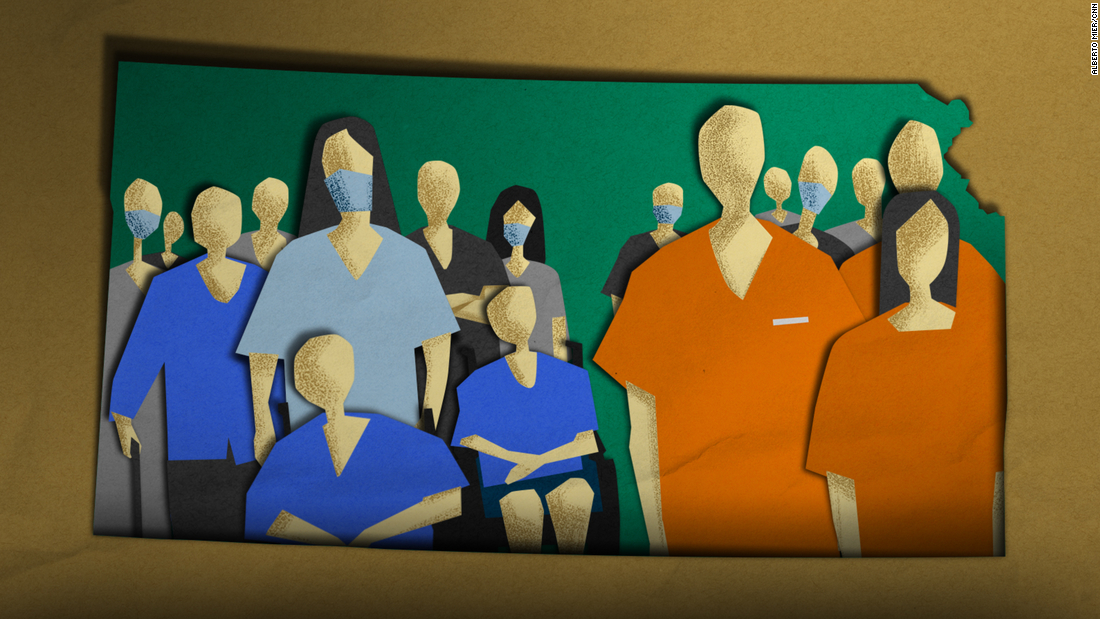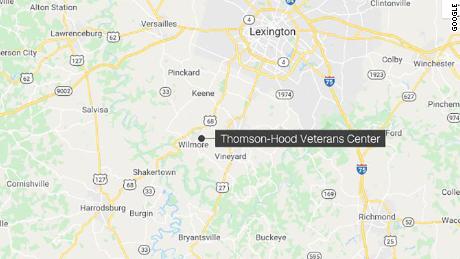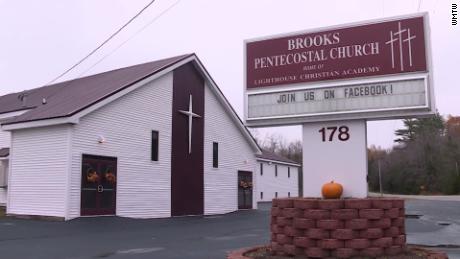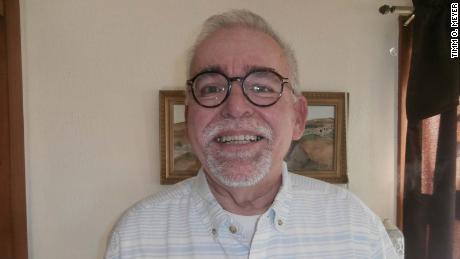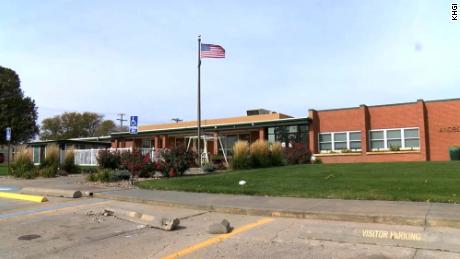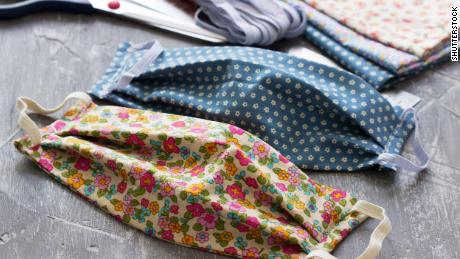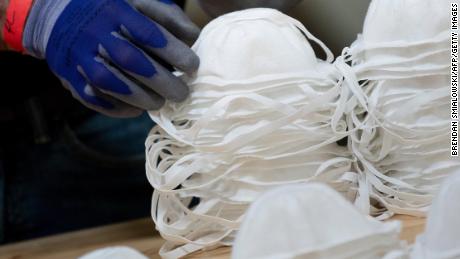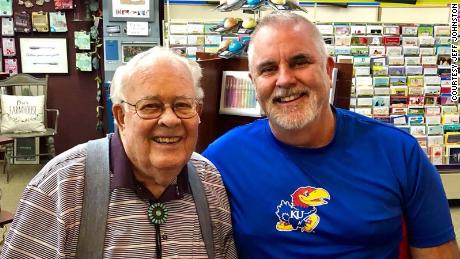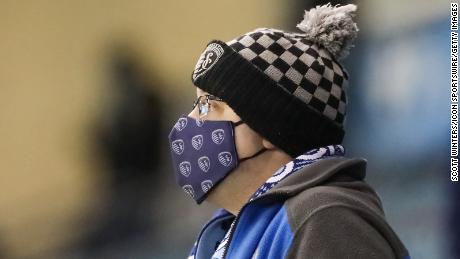For months, a rural Kansas community watched the Covid-19 pandemic unfold from afar. Then, a deadly outbreak landed right on their doorstep
Three weeks later, while the county’s number of infections crept upward, the home went into lockdown.
Every single one of the 61 residents in the home tested positive for the virus. At least 21 have since died of Covid-19, according to Mapes.
“When we started to see some of our people passing away from this, I mean, that really hit us hard,” says Reva Benien, a lifelong Norton resident. “People that we grew up with, that were family friends or church members.”
In a nearby prison facility, another crisis at the same time: The virus, likely seeping into the facility through a staff member, according to a corrections department spokesman, was spreading like wildfire, infecting hundreds of inmates in just a matter of weeks.
Some say part of understanding what went wrong lies in better understanding the surrounding community’s response to Covid-19 since the start of the pandemic, when for long, Norton remained virtually untouched by the virus.
“I think early on people just thought, ‘Well, we’re either going to get it or we’re not going to get it,’ or ‘I’m not ever going to wear a mask,'” Benien said.
As the nation now grapples with the devastating fall Covid-19 surge, Norton County has become emblematic of the pandemic’s deadly grip on Midwestern rural communities that were spared by earlier surges. But it also offers a glimpse into the diverse opinions that persist around the virus and the patchwork of safety measures used to curb its spread.
‘Norton normal’
For Norton County, home to less than 6,000 people — a community of ranchers and farmers, as the locals say — the coronavirus was nothing but a nuisance for months after the pandemic’s start.
Over the summer, as the virus again ran rampant across the country, crippling hospital systems and claiming hundreds of American lives daily, active Covid-19 cases in Norton County only reached the double digits briefly in mid-July.
Residents settled into to a lifestyle resembling the normalcy that is now, for many other Americans, just a memory.
“We didn’t overreact,” says Pastor Timm O. Meyer, of the Redeemer Lutheran Church. “We went on like pretty much as normal with just a few adaptations. That’s what I call the ‘Norton normal.'”
A day before the order went into effect, Norton’s police chief announced on Facebook officers would not be enforcing it.
Meyer says it’s the freedom to do the right thing, not being forced to, that was key for Nortoners.
“Out here, people are independent and if you give them a choice, they’re going to do the right thing, they are concerned about others,” Meyer says.
It’s that choice that he says both residents and travelers — especially from cities or states with mask mandates — enjoyed over the summer months. Some, he says, have described Norton as an “oasis.”
“An oasis in the desert, where we can do what we want… because this is still America and we still have our freedoms and we don’t like to give them up much,” he says.
Cases climbed in the fall, but little changed
Then came the fall.
“That really made people go, ‘Wow, I guess this stuff is real and it’s serious,'” Meyer said. “But it didn’t, I don’t think it changed people’s patterns.”
“You would think, ‘Well everybody’s going to stay home,'” he added. “They don’t. They still go out to work and they come back and they still go out to eat.”
The nursing home outbreak landed the small community in national headlines, but many felt the cases were contained in the two facilities — the home and the prison. There was still no “big fear” of the virus, 72-year-old resident Cindy McMullen said.
“There’s probably a little more fear since we had such a big outbreak,” she says. “They’re a little bit more fearful than they were three months ago. But I don’t think anybody’s in a panic.”
“Cases in communities like Norton are higher because of outbreaks in jails and nursing homes, but there is also wider community spread,” she had said. “Outbreaks are not isolated incidents.”
Community spread is “the top predicator” of Covid-19 outbreaks in nursing homes, the American Health Care Association (AHCA) and National Center for Assisted Living (NCAL) wrote to CNN in an email.
“The virus’ ability to spread through asymptomatic and pre-symptomatic carriers makes it extremely difficult to prevent it from getting into our facilities when there is high spread in the surrounding community,”AHCA/NCAL wrote.
“Rural areas are seeing higher COVID rates and, unfortunately, many individuals in these communities are not following CDC guidance on wearing masks and practicing social distancing,” it said.
In facilities, some failed to wear masks
An October report from the Centers for Medicare & Medicaid Services (CMS) alleged failures by the Andbe Home which placed “residents in immediate jeopardy.” The report said staff members didn’t wear masks at all times and at least one was seen with their mask “pulled down around their chin.” Infected residents were found to be living with Covid-19 negative roommates with “only a curtain between them,” the report alleged, and communal dining did not stop until two days after the facility’s first positive antigen tests in residents.
“This meets the requirements as directed by our state governing agent,” the post read. “We love our residents and are doing the best we can to take care of them.”
Of the 61 residents who tested positive since October, a total of 21 residents have died. Forty have recovered while one resident remained hospitalized for a non-Covid-19 related reason, Mapes told CNN on November 23.
“Every time I look at the numbers of those who we have lost… I am struck by the fact that each represents an individual person, with a life and a history, and connections to other people,” Mapes wrote to CNN earlier in November. “Please know what a sad time this has been for our staff, and that we have mourned every life lost.”
Throughout the pandemic, Mapes had said in an initial email, “We have strived to be in compliance with guidelines issued by CMS, the CDC and the state.”
Following the outbreak, Mapes said the home was assigned temporary new management and that new measures, including a strict no in-person visitation policy, were in place.
“After our recent inspection we knew we needed to make significant improvements, and that’s exactly what we have done now with the assistance of clinical experts on our temporary management team,” Mapes wrote. “We have re-educated all of our staff on clinical best practices — and we are all committed to doing the right thing and providing the best possible care for our residents going forward.”
This is an “insidious virus,” she added.
“Nursing homes all over the country are experiencing outbreaks due to the spread in the surrounding community and a lack of resources,” Mapes said. “What we now know is that prioritizing nursing homes in emergency situations is key, and we need to focus on a collaborative, not punitive, approach to help nursing homes respond to the pandemic.”
In Norton Correctional Facility, it was most likely staff who brought in the virus before numbers began exploding, according to Randy Bowman, the executive director of public affairs for the Kansas Department of Corrections.
“It always originates in the community somewhere so our staff … whatever they’re doing in the community, they’re the ones that are bringing it in,” he said.
And while Bowman says there are required mask protocols for both staff and inmates, he added, “I think what we’re seeing is fatigue.”
“People are not always compliant with that but those protocols have been in place.”
Some say it’s political
Local and state officials across the US say the politicization of both the virus and face masks has gotten in the way of helping curb the spread.
Jeff Johnston, McMullen’s brother, agrees. Johnston grew up in Norton and now lives in Sacramento County, California, where “you wouldn’t dream of being out in public without a mask on.” He says he is still in touch with Norton residents, including childhood friends who live there.
“If you were to admit that you thought wearing a mask was a good thing, you would be a suspected Democrat,” he says of his hometown.
“If you ever tried to say, I believe in science, so I think we need to treat this like a communicable disease .. and whether I like Trump or not, I think we should be wearing masks, you would be ostracized,” Johnston added. “You either fit in or you’re heavily branded the unusual person.”
His sister doesn’t think so.
“I don’t feel like it’s Democrat or Republican wearing a mask. I don’t think that has anything to do with it at all,” she says, adding she believes President Donald Trump “did as good as anybody with warning the people once he realized how serious of an issue it was.”
McMullen sometimes opts to just keep her distance instead, for reasons of convenience.
“It’s hard for me to breathe through those masks and I wear glasses, so then they fog up,” she told CNN earlier in November. “I wear them where I absolutely have to, but if I don’t have to, I just try to keep my distance. I haven’t worried about it.”
Benien, who spent the majority of her professional life working as a nurse, says she’s still baffled at the resistance against masks.
“Nobody likes to wear a mask. As a nurse, I didn’t say I’m not going to wear a mask when I go take care of that patient, because they have an infection or they have a compromised immune system. For whatever reason, I was wearing a mask,” she says.
For her, wearing one to protect herself and others remains a priority.
“Once a nurse, always a nurse,” she says.
Governor urges to ‘hunker down’
The county’s number of active community cases are now at the highest levels they’ve ever been. And across Kansas, the governor has sounded the alarm on a concerning spike of cases.
Less than a week later, Norton County’s board of commissioners passed a resolution to adopt the governor’s orders until December 31, rescinding a previous resolution prohibiting a mask mandate in the county. No enforcement details are listed in the county’s resolution.
The state now holds the country’s fifth highest seven-day positivity rate and on Thursday it reported record high hospitalization numbers, according to the COVID Tracking Project.
“Until then, I encourage Kansans to hunker down.”
Many Norton residents seemed to have traditional Thanksgiving plans, Benien said, something she worries will in a few weeks translate to more cases.
“If there’s one hope I have for our community, because we are a supportive and loving community in a lot of ways and we just need to be kind to each other, you know, wear the mask, follow the protocols so that we can get through this and have it behind us.”
![]()


